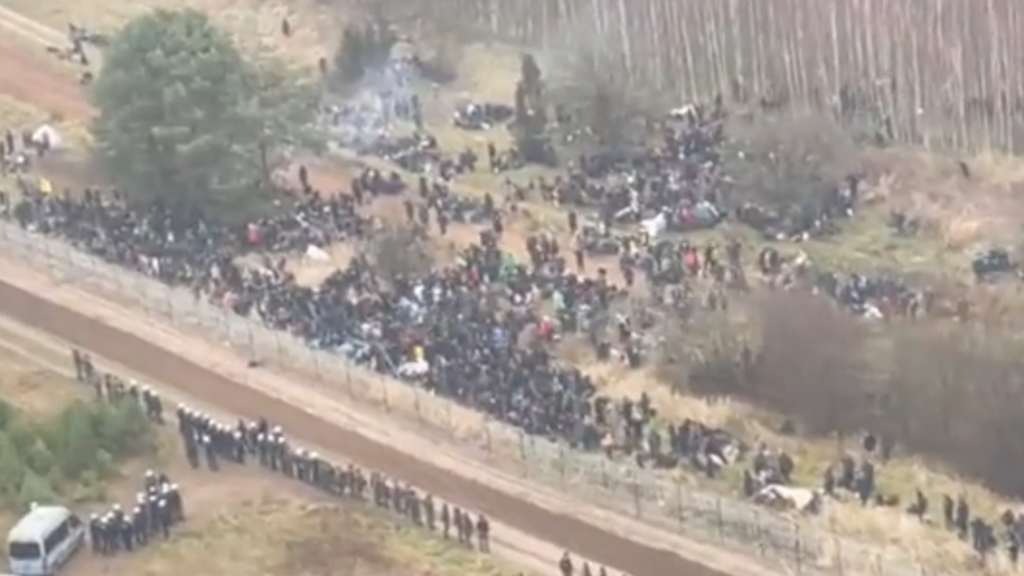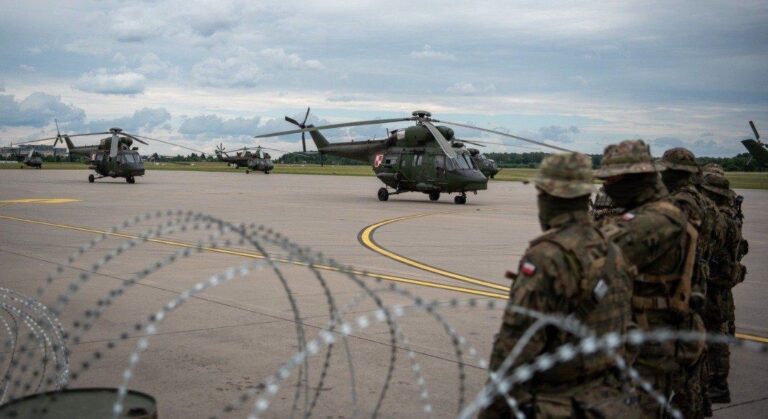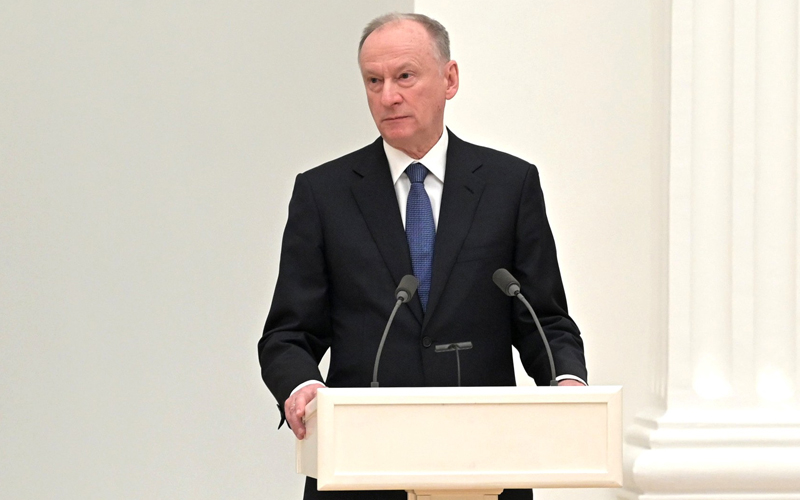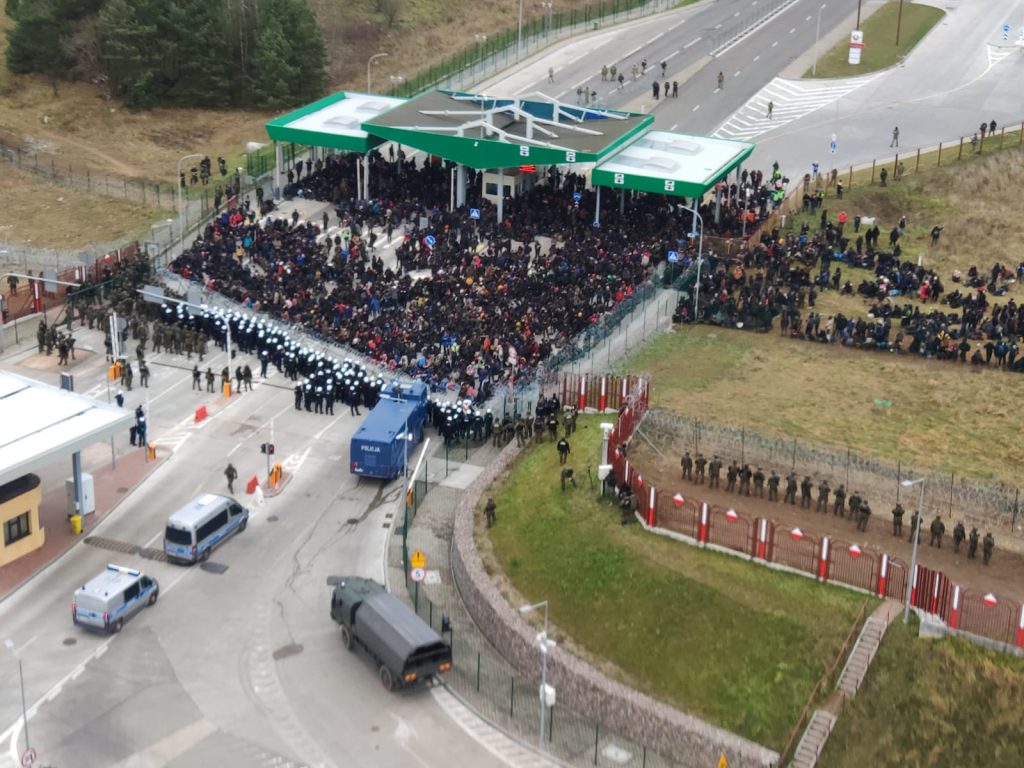The build-up of Wagner Group’s presence on Belarusian soil allows predicting possible scenarios for their use.
We are convinced that the deployment of these units in Belarus is not due to Moscow’s intention to mitigate any risks of another rebellion in Russia.
A number of factors suggest that the latest deployment implies the preparation by Russia of a large-scale military operation in the region. Had the Kremlin taken seriously the threat of another mutiny by Wagner’s men, their leader Yevgeny Prigozhin would not have been allowed to keep recruiting forces. Also, in this case, the FSB would not have shut down the criminal case initiated against Prigozhin for masterminding the mutiny attempt. An active investigation would be an effective deterrent allowing the Kremlin to hold the warlord in a tight grip. We remain convinced that Prigozhin’s stunt generally had a negative impact on the positions of the Vladimir Putin regime. The lack of a resolute response from the Kremlin has actually signaled weakness against the potential attempts to overthrow the government in Russia and the lift of taboo on public criticism of President Putin.
There are legitimate doubts that the transfer of Wagner forces and equipment to Belarus is a consequence of the Kremlin’s desire to keep the Group at bay. In fact, the time required to reach Moscow from the territory of Belarus is shorter than that from Rostov-on-Don, where the initial attempt took root.
Wagner’s deployment without heavy military hardware, which we believe was forwarded to the Russian army’s regular units fighting in Ukraine, may point to preparations for local paramilitary operations that do not involve combined arms combat.
In late July, Yevgeny Prigozhin said he was suspending a recruitment campaign for Wagner, at the same time vowing to relaunch the effort once new tasks are designated for his private army.
Already on August 3, reports emerged in the Russian segment of the internet of continued recruitment into Wagner. This suggests that the Group has already received these new tasks from Russia’s Defese Ministry, to which the Group reports.
It is unlikely that these tasks are exclusively related to Africa. It is expected that Wagner units will expand their presence on the continent, including in Mali, Sudan, Niger, Burkina Faso, and Guinea. With 60% likelihood, Wagner Group will also be deployed in Somalia and Cameroon.
Nevertheless, if the African direction is becoming Wagner’s main operational theater, its deployment in Belarus is seen as illogical. Syria, Sudan, and the Central African Republic would seem to be more suitable sites to this end.
Thus, the European theater appears to be a more likely target for Wagner Group in the medium term. In 2020, Wagner mercenaries were sent to Belarus, purportedly to be then forwarded to Sudan. However, there was a version that the Group was tasked with exerting pressure on the Alexander Lukashenko regime on the eve of the elections in order to maintain the country’s pro-Russian course. Thirteen months later, Russia launched an invasion of Ukraine, including from Belarus north of Ukraine. Performing the function of the special operations force, Wagner could take part in planning the operation from the territory of Belarus.
At the moment, we can assume several tasks and operations that Wagner can perform in Belarus (ranging from more likely to less likely).
False-flag sabotage operations. There is a high probability of a raid into western Ukraine from Belarusian soil under the guise of Poland’s armed forces. This scenario is in line with the disinformation campaign launched by Russian Foreign Intelligence chief Sergei Naryshkin and then echoed by President Putin, alleging Warsaw’s territorial claims to Ukraine’s western provinces. Not only will such a provocation create political friction between the two neighboring countries at the initial stage, it will also affect the logistics of military assistance to Ukraine and public moods in the region.
Preparation of Belarusian military for invading Ukraine. Wagner Group’s contingent in Belarus after additional staffing will not exceed 8,000, which is not enough for carrying out an assault on Ukraine. However, if Moscow manages to persuade Lukashenko to directly join the war by sending in his troops, Wagner Group is now in a perfect condition to train Belarusian units, as well as coordinating and controlling them during an offensive.
Operation in Latgale, Latvia. Russia has had plans to destabilize the situation in Latgale worked out since 2014. The region is home to a high share of the population with pro-Russian views. It is unlikely that Moscow will be able to achieve goals similar to the annexation of Crimea or declaration of quasi-states, as it happened in the east of Ukraine. However, such a scenario would pose a challenge to NATO that would involve the risks of a direct military confrontation with Russia. In the absence of consensus within the Alliance, the operation will cause irreparable damage to the organization, accompanied by a large-scale psyop on Russia’s part.
Attack on the Suwalki Gap. Such a scenario has long been discussed on Russian propaganda TV. The State Duma claimed they needed the Suwalki Gap to control a direct route by land connecting Russia’s Kaliningrad exclave with Belarus. Control over the Gap would restrict land transfer of the Allied forces to the Baltic States. However, Wagner has no sufficient forces and equipment to organize such an operation on its own. The contingent of Russian regular forces in Belarus is also unable to put this plan into life. At the same time, the movement of Wagner mercenaries in this direction, which is confirmed by the statement of Polish Prime Minister Mateusz Morawiecki, does not rule out the possibility of a hybrid operation being set up in the area. The likelihood that Wagner mercenaries, together with the Belarusian border guards, will stage a provocation on the Polish border with a repeat of the organized transfer of illegal immigrants is seen as extremely high. Injecting crowds of illegal migrants into Poland will increase public tensions and lead to higher pressure on the government regarding legal refugees from Ukraine. Meanwhile, pitting Ukraine and Poland against each other has been among Russia’s goals.


Read also: Is Lukashenko starting a new migrant crisis?








